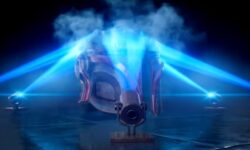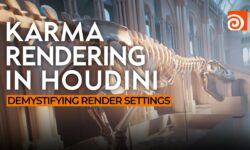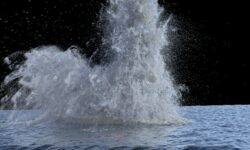HS-235 – Small Scale Fluids by Jacktone Okore
Release date:2023, July
Author:Jacktone Okore
Skill level:Beginner
Language:English
Exercise files:Yes
This course presents a distinctive approach to crafting small-scale fluids tailored for macro-style shot sequences in production. Over two sessions, students will explore various concepts, including effective surface tension approaches, custom fluid simulation control, and workflow techniques/hacks. Topics covered encompass project setup do’s and don’ts, FLIP settings (emission and variable viscosity), basic forces, optimization with collision objects, meshing, advanced force applications, VDB techniques, fluid bending, and lookdev using rendering engines like Redshift and Karma.
Learning Outcomes: Participants will depart with an enhanced understanding of FLIP simulations for unique shot scenarios, including the inherent advantages and disadvantages in such situations. Moreover, they will acquire valuable workflow practices utilized by Jacktone in his client work. By the course’s conclusion, participants will be well-prepared to apply these newfound skills to real-world projects.
[Houdini.School] HS-235 – Small Scale Fluids (720p) by Jacktone Okore
01. Introduction
01. Debs Introduction
02. JTs Introduction
02. Sheeting
01. Introduction
02. Q&A What CPU do you have
03. Initial Setup
04. Output
05. High Detail
06. Q&A Do you have to Animate 10X the Frames Per Second
07. Q&A Time Scale Flip Solver
08. Q&A Why Cant you Scale Forces Down To 0.1
09. Collision Object
10. Adjusting the Time Scale
11. Surface Tension
12. Particle Count
13. Q&A Surface Tension Measurement
14. Particle Separation
15. Flip Settings
16. Q&A Scene Scale vs Spatial Scale
17. Q&A Particle Count vs Surface Tension
18. Particles Per Voxel
19. Particle Count vs Surface Tension
20. Delete Unwanted Fluid
21. Q&A When Would Vex be Used
22. Q&A How to Handle Flickering with Reseeding On
23. Q&A Definition Of Reseeding
03. Lipstick
01. Introduction 2
02.- VEX Motion
03. Control Curve with VEX
04. Variable Density
01. Introduction 3
02. Initial Setup
03. Enabling Variable Viscosity
04. Q&A Does the Volume Source Node give you the VDB
05. Setting Up Variable Density
06. Adjusting Values
07. Emitter Settings
08. Switch Node
09. Emission & Donut Interaction
10. VEX Velocity
11. Static Object
12. Shell Thickness
13. Variable Density
14. Q&A Quick Slip On Collision
15. Density Pattern
16. Q&A Relationship, Viscosity vs Density
05. Questions
01. Q&A Flip SOP Settings
02. Q&A Discuss Low Time Scale and High Substeps
03. Q&A Bubbles
04.Q&A Vorticity
07. Slip on Collision
01. Slip on Collision Introduction
02. Slip & Stick Settings
03. Attribute Paint
04. Scatter Points
05. VDB from Particles
06. Scalar Fields
07. Transfer Attributes
08. Slip Strength
09. Tweak Settings
10. Q&A Shouldnt the Voxel Sizes Match
08. Organic fluid
01. Organic Fluid Introduction
02. Initial Setup 2
03. Setting up Velocity
04. Pop & Flip Settings
05. Pop Wind
06. Q&A Volume Micro Solvers Vs Pop Solvers
07. Pop Wind – Pop Attract
08. Pop Attract
09. Stretch & Pull
10. Q&A Is it Interesting to Use a POP fluid DOP Node for Your Droplets
11. Cache
12. Time Warp Node
13. Q&A Can You Explain the Input – Output Values on the Timewarp Node
14. Q&A Shouldnt the Voxel Sizes Match; Are You Caching Your Substeps
09. Antigravity Fluid
01. Anitgravity Fluid Introduction
02. Initial Setup 3
03. Masking Area of Simulation-
04. Variable Density Surface Tension Mask
05. Initial Flip Settings
06. Pop Force With Vex
07. Particle Behavior Flip Vs Vellum
08. Q&A Is Surface Tension an Attribute
09. Pop Wrangle with VEX
10. Surface Tension & Viscosity
11. Be Aware of Simulation Times
12. Tips for UVs
13. Meshing
14. Particle Fluid Surface Node
15. Tweaking Smoothness
16. Removing Flicker
17. Q&A Any Tips on Avoiding Artifacts Due to Refraction for Meshing Water
18. Q&A What Render Engines Do You Use
10. Texturing Fluids
01. Texturing Fluids – Initial Scene Setup
02. Materials and Lighting
03. Fresnel
04. Mixing Colors, Attribute Transfer, Meshing
05. Setting up UVs
06. Texturing with UVs
Bonus Lesson 01 – Liquid Filling
01. Introduction 4
02. Explaining the Glass Cube
03. Setting up the Emitter & DOP Net
04. Setting up the Collision, Vorticity & Bubbles
05. Velocity Control
06. Adding Swing Motion with Keyframes
07. Setting up the Divergence
08. VDB Meshing
09. Final Comments
Bonus Lesson 02 – Meshing, Lighting and Shading
01. Setting up the Scene
02. Retiming Caching
03. Meshing
04. Creating the Cut-out
05. Optimizing the Cut-out
06. Smoothing the Mesh
07. Materials and Lighting
08. Redshift Render Set-up and Lighting
09. Colors
10. Rendering a Z-Depth Pass with Redshift
11. Z-Depth in Nuke
12. Final Comments
[Houdini.School] HS-235 – Small Scale Fluids (720p) by Jacktone Okore_Subtitles.7z
[Houdini.School] HS-235 – Small Scale Fluids by Jacktone Okore
Bonus Lesson 1 – Liquid Filling
01. Introduction
02. Explaining the Glass Cube
03. Setting up the Emitter and DOP Net
04. Setting up the Collision, Vorticity and Bubbles
05. Velocity Control
06. Adding Swing Motion with Keyframes
07. Setting up the Divergence
08. VDB Meshing
09. Final Comments
Bonus Lesson 2 – Meshing, Lighting and Shading
01. Setting up the Scene
02. Retiming Caching
04. Creating the Cut-out
05. Optimizing the Cut-out
06. Smoothing the Mesh
07. Materials and Lighting
08. Redshift Render Set-up and Lighting
09. Colors
10. Rendering a Z-Depth Pass with Redshift
11. Z-Depth in Nuke
12. Final Comments
Session 1
01. Introduction
01. Debs Introduction
02. JTs Introduction
02. Sheeting
01. Introduction
02. QA – What CPU Do You Have
03. Initial Setup03. Initial Setup
04. Output
05. High Detail
06. QA – Do You Have to Animate 10X the Frames Per Second
07. QA – Time Scale Flip Solver
08. QA – Why Cant You Scale Forces Down to 0.1
09. Collision Object
10. Adjusting the Time Scale
11. Surface Tension
12. Particle Count
13. QA – Surface Tension Measurement
14. Particle Separation
15. Flip Settings
16. QA – Scene Scale vs Spatial Scale
17. QA – Particle Count vs Surface Tension
18. Particles Per Voxel
19. Particle Count vs Surface Tension
20. Delete Unwanted Fluid
21. QA – When Would VEX Be Used
22. QA – How to Handle Flickering with Reseeding On
23. QA – Definition Of Reseeding
03. Lipstick
01. Introduction
02. VEX Motion
03. Control Curve with VEX
04. Variable Density
01. Introduction
02. Initial Setup
03. Enabling Variable Viscosity
04. QA – Does the Volume Source Node Give You the VDB
05. Setting Up Variable Density
06. Adjusting Values
07. Emitter Settings
08. Switch Node
09. Emission and Donut Interaction
10. VEX Velocity
11. Static Object
12. Shell Thickness
13. Variable Density
14. QA – Quick Slip On Collision
15. Density Pattern
16. QA – Relationship, Viscosity vs Density
05. Questions
01. QA – Flip SOP Settings
02. QA – Discuss Low Time Scale and High Substeps
03. QA – Bubbles
04. QA – Vorticity
Session 2
06. Introduction
07. Slip On Collision
01. Slip On Collision Introduction
02. Slip and Stick Settings
03. Attribute Paint
04. Scatter Points
05. VDB from Particles
06. Scalar Fields
07. Transfer Attributes
08. Slip Strength
09. Tweak Settings
10. QA – Shouldnt the Voxel Sizes Match
08. Organic Fluid
01. Organic Fluid Introduction
02. Initial Setup
03. Setting up Velocity
04. Pop and Flip Settings
05. Pop Wind
06. QA – Volume Micro Solvers vs Pop Solvers
07. Pop Wind – Pop Attract
08. Pop Attract
09. Stretch and Pull
10. QA – Is It Interesting to Use a POP Fluid DOP Node for Your Droplets
11. Cache
12. Time Warp Node
13. QA – Can You Explain the Input – Output Values on the Timewarp Node
14. QA – Are You Caching Your Substeps
09. Antigravity Fluid
01. Anitgravity Fluid Introduction
02. Initial Setup
03. Masking Area of Simulation
04. Variable Density Surface Tension Mask
05. Initial Flip Settings
06. Pop Force with VEX
07. Particle Behavior Flip vs Vellum
08. QA – Is Surface Tension an Attribute
09. Pop Wrangle with VEX
10. Surface Tension and Viscosity
11. Be Aware of Simulation Times
12. Tips for UVs
13. Meshing
14. Particle Fluid Surface Node
15. Tweaking Smoothness
16. Removing Flicker
17. QA – Any Tips on Avoiding Artifacts Due to Refraction for Meshing Water
18. QA – What Render Engines Do You Use
10. Texturing Fluids
01. Texturing Fluids – Initial Scene Setup
02. Materials and Lighting
03. Fresnel
04. Mixing Colors, Attribute Transfer, Meshing
05. Setting up UVs
06. Texturing with UVs
[Houdini.School] HS-235 – Small Scale Fluids by Jacktone Okore.7z
[Houdini.School] HS-235 – Small Scale Fluids by Jacktone Okore_Subtitles.7z
You May Also Like
-
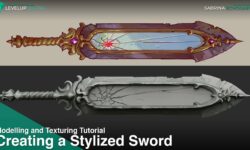
Creating a Stylized Sword by Sabrina Echouafni
On October 17, 2021 | In Levelup Digital ,Maya ,Modeling ,Substance Painter ,Texture ,Unreal Engine ,Zbrush -
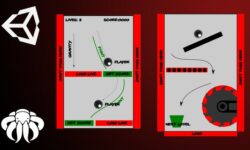
-
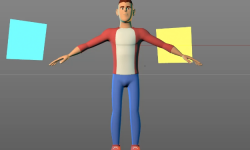
Curso de Cinema 4D (Criando Personagem) – Heber Simeone (PT-BR)
On March 19, 2021 | In 3D Modeling ,After Effects ,Character Design ,Cinema 4D ,Heber Simeoni ,Rendering



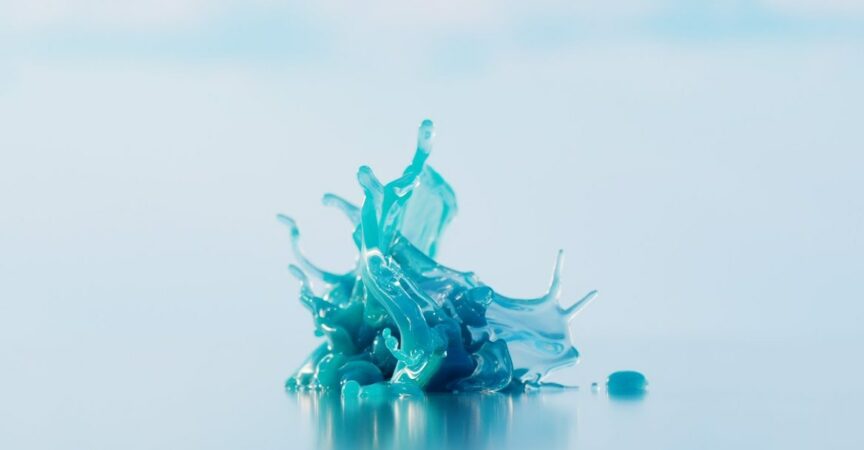

 Channel
Channel